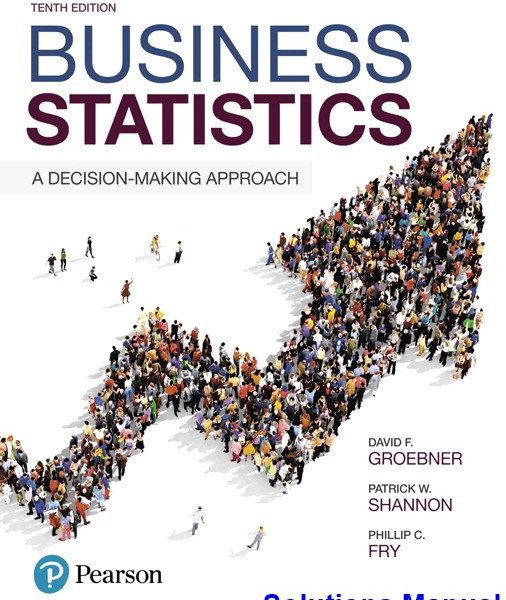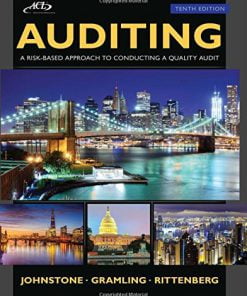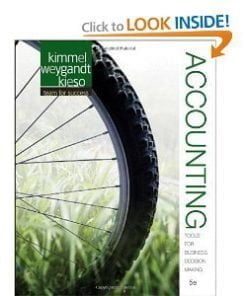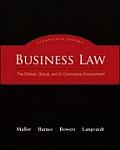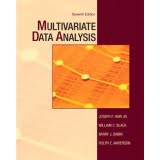Business Statistics 10th Edition Groebner Solutions Manual
$35.00 Original price was: $35.00.$26.50Current price is: $26.50.
Business Statistics 10th Edition Groebner Solutions Manual
This is completed downloadable of Business Statistics 10th Edition Groebner Solutions Manual
Product Details:
- ISBN-10 : 9780134496498
- ISBN-13 : 978-0134496498
- Author: Groebner
Business Statistics: A Decision Making Approachprovides you with an introduction to business statistics and to the analysis skills and techniques needed to make successful real-world business decisions. Written for students of all mathematical skill levels, the authors present concepts in a systematic and ordered way, drawing from their own experience as educators and consultants. Rooted in the theme that data are the starting point, Business Statistics champions the need to use and understand different types of data and data sources to be effective decision makers. This new edition integrates Microsoft Excel throughout as a way to work with statistical concepts and gives you a resource that can be used in both their academic and professional careers.
Table of Content:
- Resources for Success
- 1 The Where, Why, and How of Data Collection
- 1.1 What Is Business Statistics?
- Descriptive Statistics
- Charts and Graphs
- Inferential Procedures
- Estimation
- Hypothesis Testing
- 1.1 Exercises
- Skill Development
- Business Applications
- 1.2 Procedures for Collecting Data
- Primary Data Collection Methods
- Written Questionnaires and Surveys
- Direct Observation and Personal Interviews
- Other Data Collection Methods
- Data Collection Issues
- Data Accuracy
- Interviewer Bias
- Nonresponse Bias
- Selection Bias
- Observer Bias
- Measurement Error
- Internal Validity
- External Validity
- 1.2 Exercises
- Skill Development
- Business Applications
- 1.3 Populations, Samples, and Sampling Techniques
- Populations and Samples
- Parameters and Statistics
- Sampling Techniques
- Statistical Sampling
- 1.3 Exercises
- Skill Development
- Business Applications
- Computer Applications
- 1.4 Data Types and Data Measurement Levels
- Quantitative and Qualitative Data
- Time-Series Data and Cross-Sectional Data
- Data Measurement Levels
- Nominal Data
- Ordinal Data
- Interval Data
- Ratio Data
- 1.4 Exercises
- Skill Development
- Business Applications
- 1.5 A Brief Introduction to Data Mining
- Data Mining—Finding the Important, Hidden Relationships in Data
- 1 Overview
- Summary
- 1.1 What Is Business Statistics? (pg. 2-5)
- 1.2 Procedures for Collecting Data (pg. 5-13)
- 1.3 Populations, Samples, and Sampling Techniques (pg. 13-19)
- 1.4 Data Types and Data Measurement Levels (pg. 19-23)
- 1.5 A Brief Introduction to Data Mining (pg. 23-24)
- Key Terms
- Chapter Exercises
- Conceptual Questions
- Business Applications
- 2 Graphs, Charts, and Tables—Describing Your Data
- 2.1 Frequency Distributions and Histograms
- Frequency Distributions
- Real Estate Transactions
- Automobile Accidents
- Grouped Data Frequency Distributions
- Steps for Grouping Data into Classes
- Emergency Response Communication Links
- Histograms
- NBA Player Weights
- Relative Frequency Histograms and Ogives
- NBA Player Weights (continued)
- Joint Frequency Distributions
- Miami City Parking
- 2.1 Exercises
- Skill Development
- Business Applications
- Computer Software Exercises
- 2.2 Bar Charts, Pie Charts, and Stem and Leaf Diagrams
- Bar Charts
- Price/Earnings Ratios
- Pie Charts
- Golf Equipment
- Stem and Leaf Diagrams
- Walk-In Health Clinic
- 2.2 Exercises
- Skill Development
- Business Applications
- Computer Software Exercises
- 2.3 Line Charts, Scatter Diagrams, and Pareto Charts
- Line Charts
- Grogan Builders
- Scatter Diagrams
- Main Drive Taxi Service
- Pareto Charts
- 2.3 Exercises
- Skill Development
- Business Applications
- Computer Software Exercises
- 2 Overview
- Summary
- 2.1 Frequency Distributions and Histograms(pg. 29-49)
- 2.2 Bar Charts, Pie Charts, and Stem and Leaf Diagrams(pg. 50-59)
- 2.3 Line Charts, Scatter Diagrams, and Pareto Charts(pg. 59-67)
- Equations
- Key Terms
- Chapter Exercises
- Conceptual Questions
- Business Applications
- Computer Software Exercises
- 3 Describing Data Using Numerical Measures
- 3.1 Measures of Center and Location
- Parameters and Statistics
- Population Mean
- United Airlines
- Sample Mean
- Professor Salaries
- The Impact of Extreme Values on the Mean
- Professor Salaries (continued )
- Median
- Professor Salaries (continued )
- Skewed and Symmetric Distributions
- Professor Salaries (continued)
- Mode
- Smoky Mountain Pizza
- Applying the Measures of Central Tendency
- Issues with Excel
- Other Measures of Location
- Weighted Mean
- Myers & Associates
- Percentiles
- Henson Trucking
- Quartiles
- Issues with Excel
- Box and Whisker Plots
- Rental Car Company
- Developing a Box and Whisker Plot in Excel 2016
- Data-Level Issues
- 3.1 Exercises
- Skill Development
- Business Applications
- Computer Software Exercises
- 3.2 Measures of Variation
- Range
- Interquartile Range
- Verizon Wireless
- Population Variance and Standard Deviation
- Boydson Shipping Company
- Sample Variance and Standard Deviation
- Fabco Industries
- 3.2 Exercises
- Skill Development
- Business Applications
- Computer Software Exercises
- 3.3 Using the Mean and Standard Deviation Together
- Coefficient of Variation
- Agra-Tech Industries
- The Empirical Rule
- Tchebysheff’s Theorem
- Standardized Data Values
- SAT and ACT Exams
- 3.3 Exercises
- Skill Development
- Business Applications
- Computer Software Exercises
- 3 Overview
- Summary
- 3.1 Measures of Center and Location (pg. 74-94)
- 3.2 Measures of Variation (pg. 95-105)
- Using the Mean and Standard Deviation Together (pg. 106-113)
- Equations
- Key Terms
- Chapter Exercises
- Conceptual Questions
- Business Applications
- Computer Software Exercises
- 1-3 Special Review Section
- Chapters 1–3
- Exercises
- Integrative Application Exercises
- 4 Introduction to Probability
- 4.1 The Basics of Probability
- Important Probability Terms
- Events and Sample Space
- West Side Drive-In
- Using Tree Diagrams
- Clearwater Research
- KPMG Accounting
- Mutually Exclusive Events
- Contract-Works, Inc.
- Independent and Dependent Events
- Methods of Assigning Probability
- Classical Probability Assessment
- King’s Fine Clothes
- Relative Frequency Assessment
- Starbucks Coffee
- Potential Issues with the Relative Frequency Assessment Method
- Subjective Probability Assessment
- 4.1 Exercises
- Skill Development
- Business Applications
- Computer Software Exercises
- 4.2 The Rules of Probability
- Measuring Probabilities
- Possible Values and the Summation of Possible Values
- Addition Rule for Individual Outcomes
- KQRT 1340 Radio
- Complement Rule
- Capital Consulting
- Addition Rule for Any Two Events
- Greenfield Forest Products
- Addition Rule for Mutually Exclusive Events
- Conditional Probability
- Retirement Planning
- Tree Diagrams
- Conditional Probability for Independent Events
- Greenfield Forest Products (continued)
- Multiplication Rule
- Multiplication Rule for Any Two Events
- Using a Tree Diagram
- Multiplication Rule for Independent Events
- Christiansen Accounting
- Bayes’ Theorem
- Mammograms and Breast Cancer
- 4.2 Exercises
- Skill Development
- Business Applications
- Computer Software Exercises
- 4 Overview
- Summary
- 4.1 The Basics of Probability (pg. 129–141)
- 4.2 The Rules of Probability (pg. 141–164)
- Equations
- Key Terms
- Chapter Exercises
- Conceptual Questions
- Business Applications
- Computer Software Exercises
- 5 Discrete Probability Distributions
- 5.1 Introduction to Discrete Probability Distributions
- Random Variables
- Displaying Discrete Probability Distributions Graphically
- Mean and Standard Deviation of Discrete Distributions
- Calculating the Mean
- Calculating the Standard Deviation
- Swenson Security Sales
- 5.1 Exercises
- Skill Development
- Business Applications
- Computer Software Exercises
- 5.2 The Binomial Probability Distribution
- The Binomial Distribution
- Characteristics of the Binomial Distribution
- Combinations
- Binomial Formula
- Creative Style and Cut
- Using the Binomial Distribution Table
- Television Ratings
- Anderson Research
- Mean and Standard Deviation of the Binomial Distribution
- Mean of a Binomial Distribution
- Anderson Research (continued )
- Standard Deviation of a Binomial Distribution
- Anderson Research (continued )
- Additional Information about the Binomial Distribution
- 5.2 Exercises
- Skill Development
- Business Applications
- Computer Software Exercises
- 5.3 Other Probability Distributions
- The Poisson Distribution
- Characteristics of the Poisson Distribution
- Poisson Probability Distribution Table
- Fashion Leather Products
- The Mean and Standard Deviation of the Poisson Distribution
- The Hypergeometric Distribution
- Gender Equity
- The Hypergeometric Distribution with More Than Two Possible Outcomes per Trial
- Breakfast Cereal Preferences
- 5.3 Exercises
- Skill Development
- Business Applications
- Computer Software Exercises
- 5 Overview
- Summary
- 5.1 Introduction to Discrete Probability Distributions (pg. 173–180)
- 5.2 The Binomial Probability Distribution (pg. 180–192)
- 5.3 Other Probability Distributions (pg. 193–204)
- Equations
- Key Terms
- Chapter Exercises
- Conceptual Questions
- Business Applications
- Computer Software Exercises
- 6 Introduction to Continuous Probability Distributions
- 6.1 The Normal Distribution
- The Normal Distribution1
- The Standard Normal Distribution
- Using the Standard Normal Table
- Airline Passenger Loading Times
- Lockheed Martin
- Approximate Areas under the Normal Curve
- 6.1 Exercises
- Skill Development
- Business Applications
- Computer Software Exercises
- 6.2 Other Continuous Probability Distributions
- The Uniform Distribution
- Georgia-Pacific
- Surgery Recovery
- The Exponential Distribution
- 6.2 Exercises
- Skill Development
- Business Applications
- Computer Software Exercises
- 6 Overview
- Summary
- 6.1 The Normal Probability Distribution, (pg. 213-226)
- 6.2 Other Continuous Probability Distributions (pg. 226-232)
- Equations
- Key Terms
- Chapter Exercises
- Conceptual Questions
- Business Applications
- Computer Software Exercises
- 7 Introduction to Sampling Distributions
- 7.1 Sampling Error: What It Is and Why It Happens
- Calculating Sampling Error
- Smart Televisions
- The Role of Sample Size in Sampling Error
- 7.1 Exercises
- Skill Development
- Business Applications
- Computer Software Exercises
- 7.2 Sampling Distribution of the Mean
- Simulating the Sampling Distribution for
- Sampling from Normal Populations
- Scribner Products
- The Central Limit Theorem
- Westside Drive-In
- 7.2 Exercises
- Skill Development
- Business Applications
- Computer Software Exercises
- 7.3 Sampling Distribution of a Proportion
- Working with Proportions
- AT&T Acquisition of DirecTV
- Sampling Distribution of
- Craigslist
- 7.3 Exercises
- Skill Development
- Business Applications
- Computer Software Exercises
- 7 Overview
- Summary
- 7.1 Sampling Error: What It Is and Why It Happens(pg. 240-248)
- 7.2 Sampling Distribution of the Mean (pg. 248-262)
- 7.3 Sampling Distribution of a Proportion (pg. 262-270)
- Equations
- Key Terms
- Chapter Exercises
- Conceptual Questions
- Business Applications
- Computer Software Exercises
- 8 Estimating Single Population Parameters
- 8.1 Point and Confidence Interval Estimates for a Population Mean
- Point Estimates and Confidence Intervals
- Confidence Interval Estimate for the Population Mean, σ Known
- Confidence Interval Calculation
- Textbook Purchases
- Impact of the Confidence Level on the Interval Estimate
- National Recycling
- Impact of the Sample Size on the Interval Estimate
- Confidence Interval Estimates for the Population Mean, σ Unknown
- Student’s t-Distribution
- Internal Audit
- Estimation with Larger Sample Sizes
- 8.1 Exercises
- Skill Development
- Business Applications
- Computer Software Exercises
- 8.2 Determining the Required Sample Size for Estimating a Population Mean
- Determining the Required Sample Size for Estimating μ, σ Known
- United Meat Producers
- Determining the Required Sample Size for Estimating μ, σ Unknown
- Oceanside Petroleum
- 8.2 Exercises
- Skill Development
- Business Applications
- Computer Software Exercises
- 8.3 Estimating a Population Proportion
- Confidence Interval Estimate for a Population Proportion
- Royal Haciendas Resort
- Determining the Required Sample Size for Estimating a Population Proportion
- Naumann Research
- 8.3 Exercises
- Skill Development
- Business Applications
- Computer Software Exercises
- 8 Overview
- Summary
- 8.1 Point and Confidence Interval Estimates for a Population Mean (pg. 278-295)
- 8.2 Determining the Required Sample Size for Estimating a Population Mean (pg. 295−301)
- 8.3 Estimating a Population Proportion (pg. 301-309)
- Equations
- Key Terms
- Chapter Exercises
- Conceptual Questions
- Business Applications
- Computer Software Exercises
- 9 Introduction to Hypothesis Testing
- 9.1 Hypothesis Tests for Means
- Formulating the Hypotheses
- Null and Alternative Hypotheses
- Testing the Status Quo
- Testing a Research Hypothesis
- Testing a Claim about the Population
- Student Work Hours
- Nabisco Foods
- Types of Statistical Errors
- Significance Level and Critical Value
- Hypothesis Test for μ, σ Known
- Calculating Critical Values
- Mountain States Surgery Center
- Quality Car Care, Inc.
- p-Value Approach
- Dodger Stadium Parking
- Types of Hypothesis Tests
- p-Value for Two-Tailed Tests
- Hargrove Wood Products
- Hypothesis Test for μ, σ Unknown
- Dairy Fresh Ice Cream
- American Southern Fried Chicken
- 9.1 Exercises
- Skill Development
- Business Applications
- Computer Software Exercises
- 9.2 Hypothesis Tests for a Proportion
- Testing a Hypothesis about a Single Population Proportion
- The Developmental Basketball League
- 9.2 Exercises
- Skill Development
- Business Applications
- Computer Software Exercises
- 9.3 Type II Errors
- Calculating Beta
- Controlling Alpha and Beta
- Goldman Tax Software
- Davidson Tree and Landscape
- Small Business Startups
- Power of the Test
- 9.3 Exercises
- Skill Development
- Business Applications
- Computer Software Exercises
- 9 Overview
- Summary
- 9.1 Hypothesis Tests for Means (pg. 317-337)
- 9.2 Hypothesis Tests for a Proportion (pg. 338-344)
- 9.3 Type II Errors (pg. 344-354)
- Equations
- Key Terms
- Chapter Exercises
- Conceptual Questions
- Business Applications
- Computer Software Exercises
- 10 Estimation and Hypothesis Testing for Two Population Parameters
- 10.1 Estimation for Two Population Means Using Independent Samples
- Estimating the Difference between Two Population Means When σ1 and σ2 Are Known, Using Independent Samples
- Healthy Body
- Estimating the Difference between Two Population Means When σ1 and σ2 Are Unknown, Using Independent Samples
- Andreason Marketing, Inc.
- What If the Population Variances Are Not Equal?
- Citibank
- 10.1 Exercises
- Skill Development
- Business Applications
- Computer Software Exercises
- 10.2 Hypothesis Tests for Two Population Means Using Independent Samples
- Testing for μ1 − μ2 When σ1 and σ2 Are Known, Using Independent Samples
- Brooklyn Brick, Inc.
- Using p-Values
- Testing for μ1 − μ2 When σ1 and σ2 Are Unknown, Using Independent Samples
- Color Printer Ink Cartridges
- What If the Population Variances Are Not Equal?
- 10.2 Exercises
- Skill Development
- Business Applications
- Computer Software Exercises
- 10.3 Interval Estimation and Hypothesis Tests for Paired Samples
- Why Use Paired Samples?
- PGA of America Testing Center
- Hypothesis Testing for Paired Samples
- Color Printer Ink
- 10.3 Exercises
- Skill Development
- Business Applications
- Computer Software Exercises
- 10.4 Estimation and Hypothesis Tests for Two Population Proportions
- Estimating the Difference between Two Population Proportions
- Hypothesis Tests for the Difference between Two Population Proportions
- Transportation Security Administration
- 10.4 Exercises
- Skill Development
- Business Applications
- Computer Software Exercises
- 10 Overview
- Summary
- 10.1 Estimation for Two Population Means Using Independent Samples (pg. 364-374)
- 10.2 Hypothesis Tests for Two Population Means Using Independent Samples (pg. 374-386)
- 10.3 Interval Estimation and Hypothesis Tests for Paired Samples (pg. 386-394)
- 10.4 Estimation and Hypothesis Tests for Two Population Proportions (pg. 395-401)
- Equations
- Key Terms
- Chapter Exercises
- Conceptual Questions
- Business Applications
- Computer Software Exercises
- 11 Hypothesis Tests and Estimation for Population Variances
- 11.1 Hypothesis Tests and Estimation for a Single Population Variance
- Chi-Square Test for One Population Variance
- Lockheed Martin Corporation
- Genesis Technology
- Interval Estimation for a Population Variance
- 11.1 Exercises
- Skill Development
- Business Applications
- Computer Software Exercises
- 11.2 Hypothesis Tests for Two Population Variances
- F-Test for Two Population Variances
- Mass Transit
- Goodyear Tire Company
- 11.2 Exercises
- Skill Development
- Business Applications
- Computer Software Exercises
- 11 Overview
- Summary
- 11.1 Hypothesis Tests and Estimation for a Single Population Variance (pg. 411–419)
- 11.2 Hypothesis Tests for Two Population Variances (pg. 420–429)
- Equations
- Key Term
- Chapter Exercises
- Conceptual Questions
- Business Applications
- Computer Software Exercises
- 12 Analysis of Variance
- 12.1 One-Way Analysis of Variance
- Introduction to One-Way ANOVA
- Partitioning the Sum of Squares
- The ANOVA Assumptions
- Applying One-Way ANOVA
- Roderick, Wilterding & Associates
- The Tukey-Kramer Procedure for Multiple Comparisons
- Digitron, Inc.
- Fixed Effects Versus Random Effects in Analysis of Variance
- 12.1 Exercises
- Skill Development
- Business Applications
- Computer Software Exercises
- 12.2 Randomized Complete Block Analysis of Variance
- Randomized Complete Block ANOVA
- Was Blocking Necessary?
- Online Course Exams
- Fisher’s Least Significant Difference Test
- Online Course Exams (continued)
- 12.2 Exercises
- Skill Development
- Business Applications
- Computer Software Exercises
- 12.3 Two-Factor Analysis of Variance with Replication
- Two-Factor ANOVA with Replications
- Interaction Explained
- A Caution about Interaction
- 12.3 Exercises
- Skill Development
- Business Applications
- Computer Software Exercises
- 12 Overview
- Summary
- 12.1 One-Way Analysis of Variance (pg. 435–453)
- 12.2 Randomized Complete Block Analysis of Variance (pg. 453–464)
- 12.3 Two-Factor Analysis of Variance with Replication (pg. 464–473)
- Equations
- Key Terms
- Chapter Exercises
- Conceptual Questions
- Business Applications
- Computer Software Exercises
- 8–12 Special Review Section
- Chapters 8–12
- Using the Flow Diagrams
- Exercises
- Integrative Application Problems
- 13 Goodness-of-Fit Tests and Contingency Analysis
- 13.1 Introduction to Goodness-of-Fit Tests
- Chi-Square Goodness-of-Fit Test
- Central University Food Service
- Call Center Support,
- University Internet Service
- 13.1 Exercises
- Skill Development
- Business Applications
- Computer Software Exercises
- 13.2 Introduction to Contingency Analysis
- 2 × 2 Contingency Tables
- Jury Selection
- r × c Contingency Tables
- Chi-Square Test Limitations
- 13.2 Exercises
- Skill Development
- Business Applications
- Computer Software Exercises
- 13 Overview
- Summary
- 13.1 Introduction to Goodness-of-Fit Tests (pg. 498-510)
- 13.2 Introduction to Contingency Analysis (pg. 510-520)
- Equations
- Key Term
- Chapter Exercises
- Conceptual Questions
- Business Applications
- Computer Software Exercises
- 14 Introduction to Linear Regression and Correlation Analysis
- 14.1 Scatter Plots and Correlation
- The Correlation Coefficient
- Stock Portfolio Analysis
- Cause-and-Effect Interpretations
- 14.1 Exercises
- Skill Development
- Business Applications
- Computer Software Exercises
- 14.2 Simple Linear Regression Analysis
- The Regression Model Assumptions
- Meaning of the Regression Coefficients
- Least Squares Regression Properties
- Foresight Investments
- Significance Tests in Regression Analysis
- Significance of the Slope Coefficient
- 14.3 Uses for Regression Analysis
- Regression Analysis for Description
- Home Prices
- Regression Analysis for Prediction
- Confidence Interval for the Average y, Given x
- Prediction Interval for a Particular y, Given x
- Common Problems Using Regression Analysis
- 14.3 Exercises
- Skill Development
- Business Applications
- Computer Software Exercises
- 14 Overview
- Summary
- 14.1 Scatter Plots and Correlation (pg. 527-536)
- 14.2 Simple Linear Regression Analysis (pg. 536-554)
- 14.3 Uses for Regression Analysis (pg. 554-564)
- Equations
- Key Terms
- Chapter Exercises
- Conceptual Questions
- Business Applications
- Computer Software Exercises
- 15 Multiple Regression Analysis and Model Building
- 15.1 Introduction to Multiple Regression Analysis
- Basic Model-Building Concepts
- Model Specification
- Model Building
- First City Real Estate
- Computing the Regression Equation
- The Coefficient of Determination
- Model Diagnosis
- Is the Model Significant?
- Are the Individual Variables Significant?
- Is the Standard Deviation of the Regression Model Too Large?
- Is Multicollinearity a Problem?
- Confidence Interval Estimation for Regression Coefficients
- 15.1 Exercises
- Skill Development
- Computer Software Exercises
- 15.2 Using Qualitative Independent Variables
- Salary Analysis
- 15.3 Working with Nonlinear Relationships
- Ashley Investment Services
- Analyzing Interaction Effects
- Partial F-Test
- 15.3 Exercises
- Skill Development
- Computer Software Exercises
- 15.4 Stepwise Regression
- Forward Selection
- Backward Elimination
- B.T. Longmont Company
- Standard Stepwise Regression
- Best Subsets Regression
- Winston Investment Advisors
- 15.4 Exercises
- Skill Development
- Computer Software Exercises
- 15.5 Determining the Aptness of the Model
- Analysis of Residuals
- Checking for Linearity
- Do the Residuals Have Equal Variances at All Levels of Each x Variable?
- Are the Residuals Independent?
- Checking for Normally Distributed Error Terms
- Corrective Actions
- 15.5 Exercises
- Skill Development
- Computer Software Exercises
- 15 Overview
- Summary
- 15.1 Introduction to Multiple Regression Analysis (pg. 574-590)
- 15.2 Using Qualitative Independent Variables (pg. 590–597)
- 15.3 Working with Nonlinear Relationships (pg. 597-610)
- 15.4 Stepwise Regression (pg. 611-618)
- Determining the Aptness of the Model (pg. 618-627)
- Equations
- Key Terms
- Chapter Exercises
- Conceptual Questions
- Computer Software Exercises
- 16 Analyzing and Forecasting Time-Series Data
- 16.1 Introduction to Forecasting and Time-Series Data
- General Forecasting Issues
- Components of a Time Series
- Trend Component
- Seasonal Component
- Cyclical Component
- Random Component
- Introduction to Index Numbers
- Cranston Supplies, Inc.
- Using Index Numbers to Deflate a Time Series
- 16.1 Exercises
- Skill Development
- Business Applications
- Computer Software Exercises
- 16.2 Trend-Based Forecasting Techniques
- Developing a Trend-Based Forecasting Model
- Comparing the Forecast Values to the Actual Data
- Autocorrelation
- Wilder Foods, Inc.
- True Forecasts and Split Samples
- Nonlinear Trend Forecasting
- Some Words of Caution
- Adjusting for Seasonality
- Computing Seasonal Indexes
- The Need to Normalize the Indexes
- Deseasonalizing
- 16.2 Exercises
- Skill Development
- Business Applications
- Computer Software Exercises
- 16.3 Forecasting Using Smoothing Methods
- Exponential Smoothing
- Single Exponential Smoothing
- Dawson Graphic Design
- Double Exponential Smoothing
- Billingsley Insurance Company
- Forecasting with Excel 2016
- Billingsley Insurance Company (continued)
- 16.3 Exercises
- Skill Development
- Business Applications
- Computer Software Exercises
- 16 Overview
- Summary
- 16.1 Introduction to Forecasting and Time-Series Data (pg. 637−644)
- 16.2 Trend-Based Forecasting Techniques (pg. 644−666)
- 16.3 Forecasting Using Smoothing Methods (pg. 667−680)
- Equations
- Key Terms
- Chapter Exercises
- Conceptual Questions
- Business Applications
- Computer Software Exercises
- 17 Introduction to Nonparametric Statistics
- 17.1 The Wilcoxon Signed Rank Test for One Population Median
- The Wilcoxon Signed Rank Test—Single Population
- Executive Salaries
- 17.1 Exercises
- Skill Development
- Business Applications
- Computer Software Exercises
- 17.2 Nonparametric Tests for Two Population Medians
- The Mann−Whitney U-Test
- Mann−Whitney U-Test—Large Samples
- The Wilcoxon Matched-Pairs Signed Rank Test
- Financial Software Associates
- Ties in the Data
- Large-Sample Wilcoxon Test
- 17.2 Exercises
- Skill Development
- Business Applications
- Computer Software Exercises
- 17.3 Kruskal−Wallis One-Way Analysis of Variance
- Amalgamated Sugar
- Limitations and Other Considerations
- 17.3 Exercises
- Skill Development
- Business Applications
- Computer Software Exercises
- 17 Overview
- Summary
- 17.1 The Wilcoxon Signed Rank Test for One Population Median (pg. 688-693)
- 17.2 Nonparametric Tests for Two Population Medians (pg. 693-705)
- 17.3 Kruskal−Wallis One-Way Analysis of Variance (pg. 705-711)
- Equations
- Chapter Exercises
- Conceptual Questions
- Business Applications
- Computer Software Exercises
- 18 Introducing Business Analytics
- 18.1 What Is Business Analytics?
- Descriptive Analytics
- Predictive Analytics
- 18.1 Exercises
- Conceptual Questions
- Business Applications
- 18.2 Data Visualization Using Microsoft Power BI Desktop
- Using Microsoft Power BI Desktop
- The Opening Power BI Screen
- Getting the Data
- Relationships among the Data Tables
- Creating a Visualization
- Creating New Variables
- Creating a Measure
- Creating Multiple-Page Reports
- 18.2 Exercises
- Computer Software Exercises
- 18 Overview
- Summary
- 18.1 What Is Business Analytics? (pg. 719-725)
- 18.2 Data Visualization Using Microsoft Power BI Desktop (pg. 725-740)
- Key Terms
- Appendix Tables
- Appendix A Random Numbers Table
- Appendix B Cumulative Binomial Distribution Table
- Appendix C Cumulative Poisson Probability Distribution Table
- Appendix D Standard Normal Distribution Table
- Appendix E Exponential Distribution Table
- Appendix F Values of t for Selected Probabilities
- Appendix G Values of χ2 for Selected Probabilities
- Appendix H F-Distribution Table: Upper 5% Probability (or 5% Area) under F-Distribution Curve
- Appendix H (continued) F-Distribution Table: Upper 2.5% Probability (or 2.5% Area) under F-Distribution Curve
- Appendix H (continued) F-Distribution Table: Upper 1% Probability (or 1% Area) under F-Distribution Curve
- Appendix I Distribution of the Studentized Range (q-values)
- Appendix J Critical Values of r in the Runs Test
- Appendix K Mann-Whitney U Test Probabilities (n < 9)
- Appendix L Mann-Whitney U Test Critical Values (9 ≤ n ≤ 20)
- Appendix M Critical Values of T in the Wilcoxon Matched-Pairs Signed-Ranks Test (n ≤ 25)
- Appendix N Critical Values dL and dU of the Durbin-Watson Statistic D (Critical Values Are One-Sided)
- Appendix O Lower and Upper Critical Values W of Wilcoxon Signed-Ranks Test
- Appendix P Control Chart Factors
- Answers to Selected Odd-Numbered Exercises
- Chapter 1
- Chapter 2
- Chapter 3
- Chapter 4
- Chapter 5
- Chapter 6
- Chapter 7
- Chapter 8
- Chapter 9
- Chapter 10
- Chapter 11
- Chapter 12
- Chapter 13
- Chapter 14
- Chapter 15
- Chapter 16
- Chapter 17
- Chapter 18
- References
- Glossary
- Index
- A
- B
- C
- D
- E
- F
- G
- H
- I
- J
- K
- L
- M
- N
- O
- P
- Q
- R
- S
- T
- U
- V
- W
- Z
- Credits
- Photographs
- Frontmatter
- Chapter 1
- Chapter 2
- Chapter 3
- Chapter 4
- Chapter 5
- Chapter 6
- Chapter 7
- Chapter 8
- Chapter 9
- Chapter 10
- Chapter 11
- Chapter 12
- Chapter 13
- Chapter 14
- Chapter 15
- Chapter 16
- Chapter 17
- Chapter 18
- Figures
- Chapters 1–18
- Chapter 1
- Chapter 2
- Chapter 5
- Chapter 9
- Chapter 10
- Chapter 16
People Also Search:
business statistics
business statistics 10th edition
business statistics 10th edition groebner
business statistics 10th edition download scribd
business statistics 10th edition solution manual download pdf
Related products
Solution Manual
Auditing A Risk Based-Approach to Conducting a Quality Audit Johnstone 10th Edition Solutions Manual
Solution Manual
Solution Manual for Data Structures and Other Objects Using C++, 4/E Michael Main, Walter Savitch
Solution Manual
Solution manual for Accounting: Tools for Business Decision Making Kimmel Weygandt Kieso 5th Edition
Solution Manual
Solution Manual
Solution Manual
International Accounting Doupnik 4th Edition Solutions Manual




